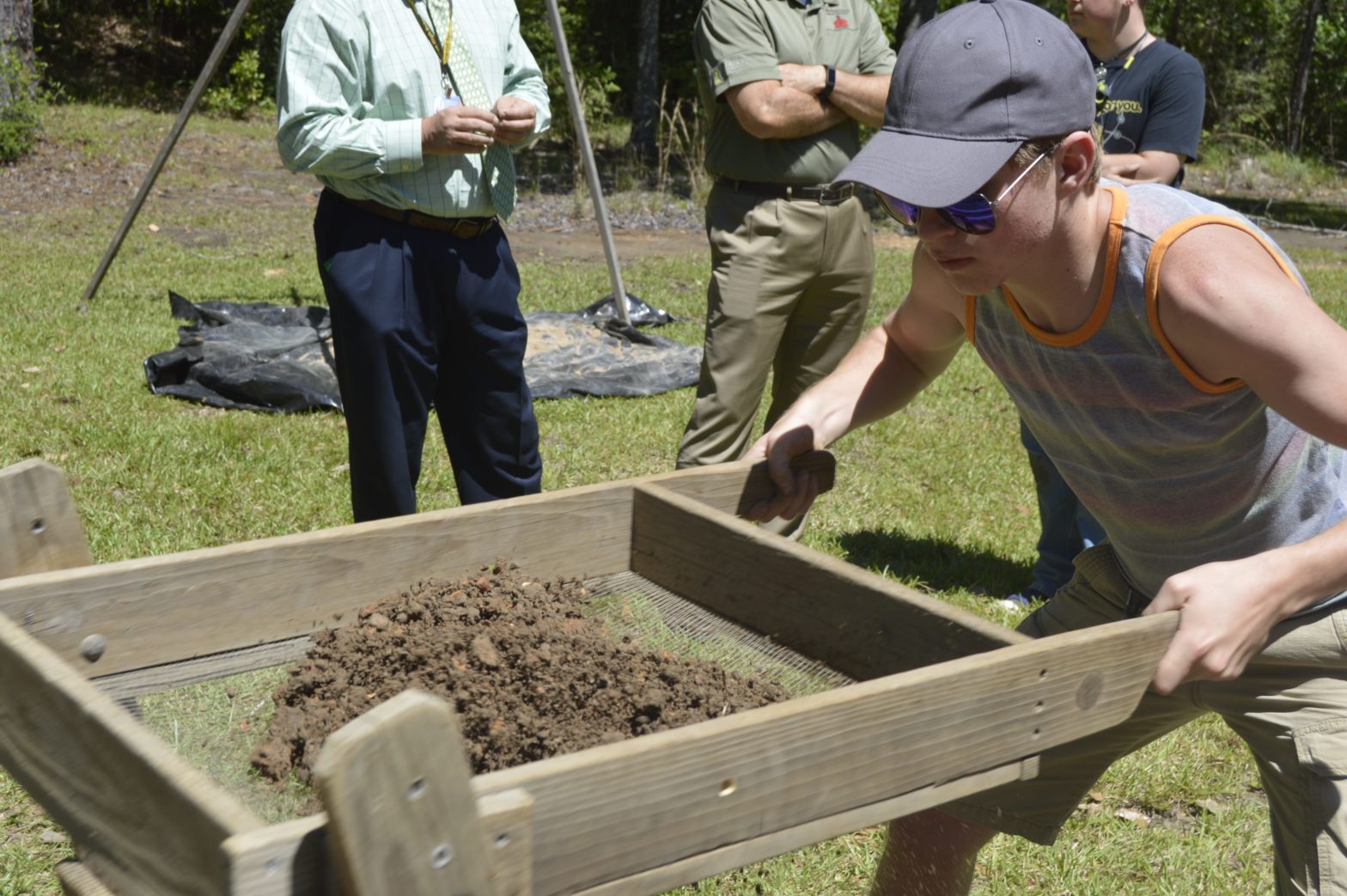MILTON — Milton High School’s anthropology/archaeology class, along with the Florida Public Archaeology Network, has been working this year to uncover Milton’s past — literally.
On April 7, students from Steven Ramirez’s anthropology/archaeology class at MHS gathered at the so-called “Scott site” on Munson Highway to research, and reveal, a part of Milton’s early industrial heritage.
“How do you like this classroom?” Ramirez said as he looked around the site toward the Blackwater River. “I’m the luckiest teacher ever to be able to come out here every Friday.”
The Scott site, owned by Rick and Diane Scott of Milton, is composed of articulated brick foundations, thousands of brick fragments and other brickyard artifacts, including ceramics, glass and iron nails.
The property owners alerted the FPAN about protruding brick after they cleared the property, according to Della Scott-Ireton, associate director of FPAN. They also discovered a large amount of broken brick that covered the shoreline of the Blackwater River behind their property.
LESSONS IN DOCUMENTING AND MAPPING
Historical information gathered by the FPAN suggests that the uncovered foundations are associated with brickyard buildings and brick kilns owned by John B. Bahan, circa 1820-1830, according to Scott-Ireton.
The FPAN believes the two large, water-filled depressions adjacent to the excavation area probably represent borrow pits where clay was extracted for brick production.
In Milton’s founding days, the Blackwater River served as the main transportation artery for timber, lumber, brick, naval stores and ship building industries.
Along with Ramirez, several graduate students from the University of West Florida supervised the excavation. Katherine Sims was among them.
“This is our first full day at the site,” Sims said. “Usually the students come once a week for one class period, so it’s a little slow-going. Most of [the graduate students] have been out here every day this school year.”
The brick foundations were once uncovered, but never documented. Now, that is what the students are doing.
“We are teaching them how to document, how to make maps, how to fill out paperwork,” Sims said.
SIFTING AND WEIGHING
The research being done at the site is under UWF graduate student Emily Dietrich’s direction.
“There are many whole bricks left in place,” Dietrich said. “The rubble and broken pieces are weighed and discarded. This way, we can keep track of how much is coming out so we can tell how much was produced here.”
According to Dietrich, the students have found pieces of brick that appear “glazed.” This is due to a natural salting, she said, when the heat mixed with the chemicals in the brick, is crystallized on the exterior.
When they uncover large samples of glazed brick, they keep them. Everything else goes into the discard pile, which is later used to cover holes.
Cole Panzic, an MHS senior, was in charge of weighing and discarding.
“We sift the dirt until it’s just composite brick,” Panzic said. “Then we weigh it so we know how much is coming out of each area.”
The areas being dug up by the students are distinguished by their own color. The artifacts kept are put into bags and labeled with the area’s coordinating color.
“What we are looking for is getting kids interested in archaeology – in the past and their heritage,” Scott-Ireton said. “It’s a way to get local school students investigating the history in their backyards.”
This article originally appeared on Santa Rosa Press Gazette: 'How do you like this classroom?'
